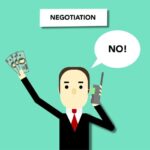In the world of e-commerce, where the slow and steady pace of brick-and-mortar shops contrasts sharply with the lightning-fast expectations of online consumers, ensuring your website is optimized for conversions is crucial. You're constantly looking for ways to turn browsers into buyers, and while the landscape might seem daunting, there are proven strategies that can make a significant difference. From enhancing site speed to leveraging social proof, these techniques are designed to streamline the shopping experience and build trust with your audience. As we explore these six key strategies, you'll discover how small tweaks can lead to substantial improvements in your conversion rates, ultimately boosting your bottom line. Stick around to uncover how these insights can transform your e-commerce approach.
Key Takeaways
- Optimizing website speed is crucial for reducing bounce rates and improving user experience.
- Simplifying navigation can significantly enhance eCommerce conversion rates and drive more traffic.
- Personalizing the shopping experience through data-driven personalization and trust signals can increase conversion rates and foster customer loyalty.
- Streamlining the checkout process by offering guest checkout, simplifying forms, and ensuring security can boost conversion rates.
Enhance Site Speed
Why is it that optimizing your website's speed can significantly reduce bounce rates and enhance user experience, thereby driving up conversion rates? In the realm of eCommerce, where every second counts, the correlation between site speed and eCommerce conversion rates is undeniable. A faster load time not only captivates users but also sustains their interest, directly influencing their decision to engage further or make a purchase.
To improve your eCommerce conversion, start by compressing images, leveraging caching, and streamlining code to enhance site speed. These technical adjustments can markedly decrease load times, providing a smoother mobile experience and more efficient website navigation. Remember, optimizing conversion rates isn't a one-time task but requires regular monitoring and tweaking to maintain peak performance.
eCommerce websites face the challenge of balancing rich content with speed. Yet, by prioritizing site speed, you not only improve eCommerce outcomes but also serve your audience better. A fast-loading site respects users' time, reduces frustration, and fosters a positive perception of your brand. Thus, in the pursuit of optimizing conversion rates, enhancing site speed emerges as a critical, data-driven strategy for success.
Having optimized your site's speed, it's crucial to now focus on simplifying navigation to further enhance your eCommerce conversion rates. Simplify navigation to ensure your website's user experience (UX) is seamless and intuitive. By adopting flat and easy-to-navigate designs where everything is accessible within three clicks, you're not just making your website easy to use, but also optimizing it for better engagement and conversion rates.
Data shows that improving navigation can increase add to cart clicks by 34%. This is a significant uplift, demonstrating that visitors to your site value an effortless browsing experience. Simplifying navigation is directly linked to increased sales, as it reduces user frustration and boosts engagement. This is because customers can easily find product categories and items, making it easier for them to make purchase decisions.
Enhancing navigation also has the added benefit of improving your site's standing with search engines. A well-organized site is easier for search engines to crawl, which can improve your site's visibility and drive more traffic. In essence, by making your website's navigation more intuitive, you're serving your visitors better, encouraging them to become customers, and ultimately boosting your site's performance.
Personalize Shopping
In today's highly competitive e-commerce landscape, personalizing shopping experiences for your customers can significantly increase your conversion rates. Personalizing shopping isn't just about addressing your customers by name; it's about tailoring the entire customer journey to their preferences, leveraging predictive data collection to anticipate their needs. This strategy not only enhances the likelihood of conversion but also fosters customer loyalty through a positive user experience.
To effectively personalize shopping, consider these strategies:
- Utilize Data-Driven Personalization: Collect customer data to customize the shopping journey. This includes analyzing past purchases, browsing behavior, and preferences to offer relevant product recommendations.
- Incorporate Trust Signals and Social Proof: Embed trust signals and social proof, such as customer reviews, to make the process more reassuring. This not only personalizes the experience but also builds confidence in your brand.
- Highlight Your Unique Selling Propositions (USPs): Tailor your messaging to showcase how your USPs meet their specific needs. This personalized approach makes customers feel understood and valued.
Streamline Checkout
After optimizing the personalized shopping experience, it's crucial to focus on streamlining the checkout process to further boost conversion rates. The checkout process is often where potential sales falter, primarily due to cart abandonment. To combat this, offering a guest checkout option is essential. Many customers balk at the prospect of creating an account for a one-time purchase, leading to an abandoned cart. Simplifying the checkout form can significantly enhance the user experience. By reducing form fields to only the essentials, you're respecting your customer's time and reducing friction.
Incorporating multiple checkout options and payment methods caters to a broader audience, ensuring that everyone finds a convenient way to complete their purchase. Security is also non-negotiable; SSL certificates should be visibly in place to assure customers their data is protected.
A strategic, data-driven approach to streamline checkout includes analyzing abandonment rates and continuously iterating the checkout experience to minimize barriers. By focusing on these key aspects—guest checkout, reducing form fields, diversifying checkout options and payment methods, and ensuring security—you're not just optimizing the checkout process. You're also demonstrating a commitment to serving your customers' needs, thereby reducing cart abandonment and elevating conversion rates.
Implement A/B Testing
To boost your e-commerce site's performance, kick off by implementing A/B testing to pinpoint and apply changes that elevate conversion rates. This strategic approach is central to conversion rate optimization (CRO), allowing you to make data-driven decisions that directly impact your success. Here's how you can effectively leverage A/B testing:
- Analyze Your Current Conversion: Before diving into testing strategies, it's crucial to utilize analytics to understand where your site stands. Identify areas on your landing pages and product pages that are underperforming or could potentially increase eCommerce conversion.
- Develop Testing Strategies: Create variations of those identified elements—whether it's the layout, colors, or copy—to test against the current version. This methodical approach ensures you're not changing aspects blindly but rather based on evidence of what might improve your conversion.
- Implement, Measure, and Optimize: With A/B testing, the goal is to continuously test, analyze results, and implement the winning variations. This iterative process not only helps you to steadily increase your conversion rates but also enhances the overall user experience by catering to their preferences and needs.
Leverage Social Proof
Harness the power of social proof to boost your e-commerce site's credibility and conversion rates by strategically incorporating customer reviews and testimonials. Including these elements on your website can significantly build trust and credibility with potential buyers, making them feel more secure in their shopping experience. By showcasing real feedback from satisfied customers, you're not just selling a product; you're offering a promise of satisfaction and quality.
Using customer reviews and ratings as a form of social proof reassures potential customers about the reliability and quality of your products or services. Encourage reviewers to upload product images alongside their testimonials to add authenticity and influence purchase decisions further. This strategy not only enriches your product pages with appealing copy but also significantly increases conversions by converting visitors into loyal customers.
Frequently Asked Questions
How Can I Improve My Ecommerce Conversion Rate?
To boost your e-commerce conversion rate, think of your website as a bustling market stall. You'll want to speed up transactions, simplify browsing, personalize the experience, and be upfront about costs to attract more buyers.
How Do You Optimize Ecommerce?
To optimize your e-commerce, focus on analyzing customer journeys, speeding up site load times, simplifying navigation, personalizing experiences, and being transparent with pricing. These data-driven strategies serve to enhance conversions and customer satisfaction.
How Do You Optimize Conversions?
To turn the tide on your conversion rates, delve into customer data. You'll uncover patterns that guide your strategy, ensuring your efforts hit the mark in serving your audience's needs more effectively.
What Are the Conversion Strategies?
To boost your conversions, you'll need to analyze customer data, personalize experiences, and optimize your site's speed. Also, leveraging social proof and A/B testing can significantly impact your success in serving your audience effectively.






